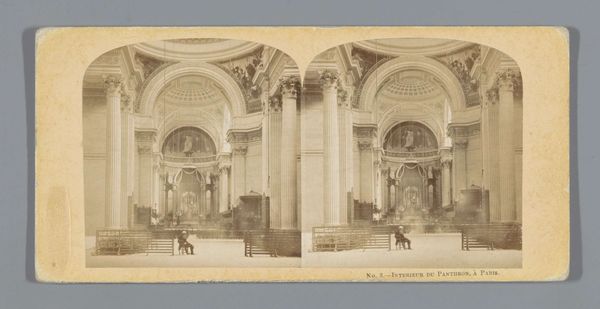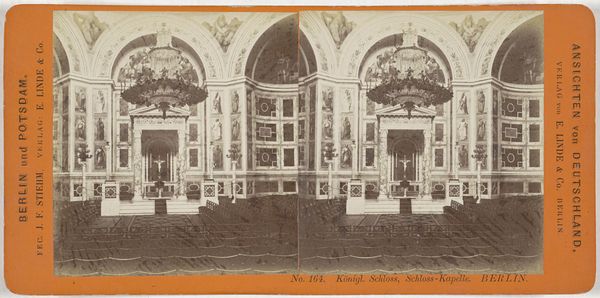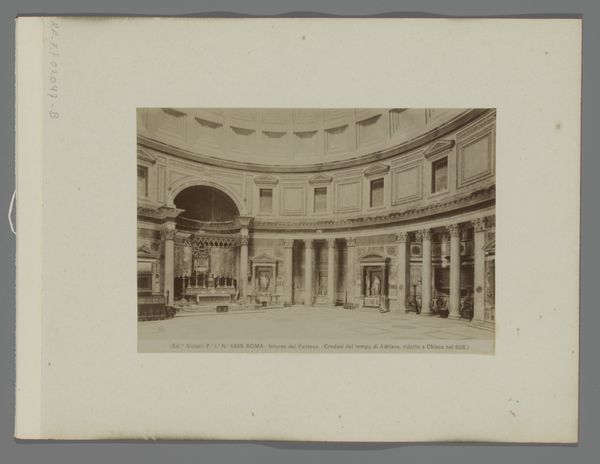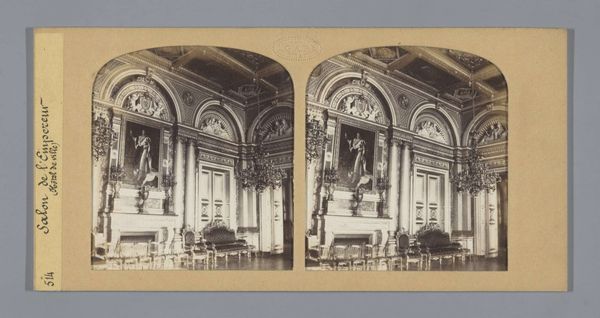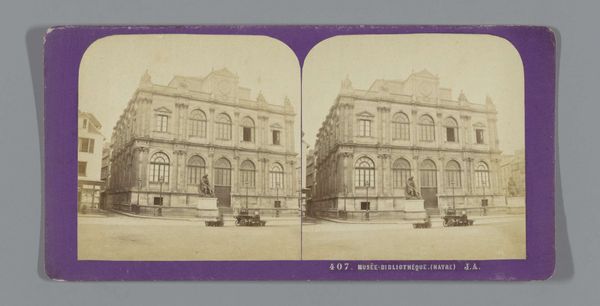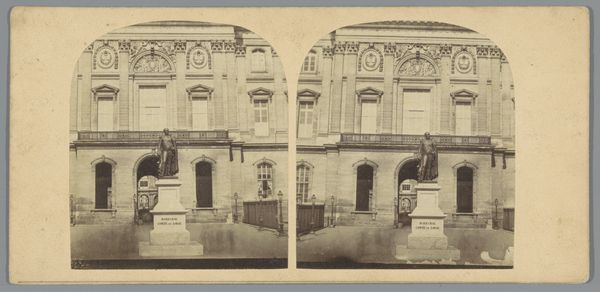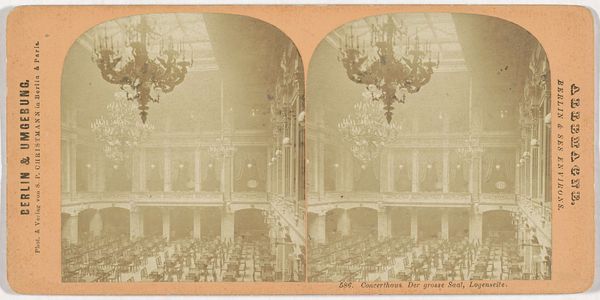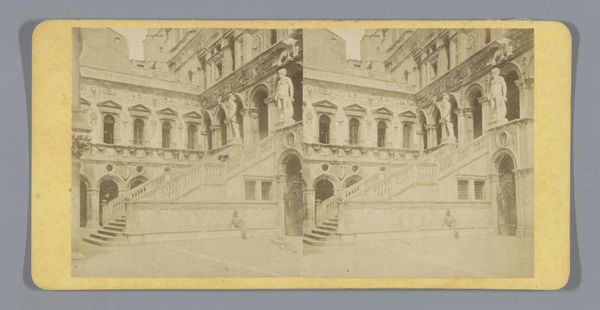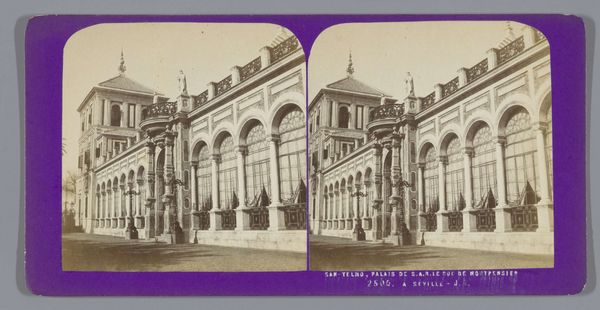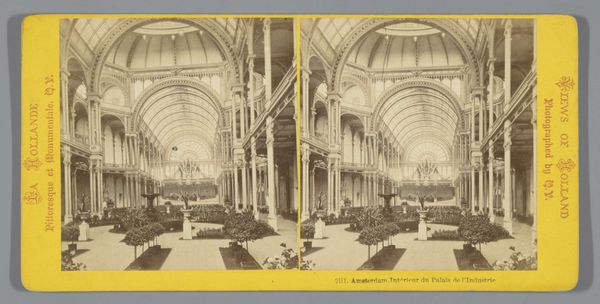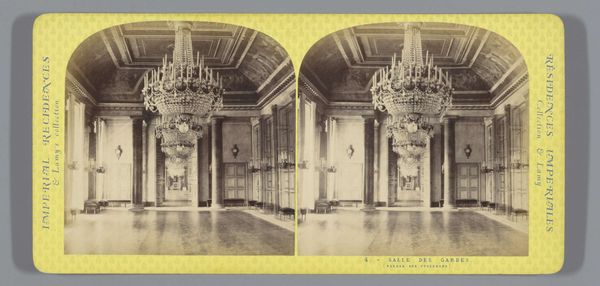
Dimensions: height 85 mm, width 170 mm
Copyright: Rijks Museum: Open Domain
Editor: This albumen print, taken by the London Stereoscopic Company between 1850 and 1875, captures the Interior of the Panthéon in Paris. I'm struck by the overwhelming sense of height and the intricate detail captured despite the limitations of early photography. What symbols or underlying meanings do you perceive in a space like this? Curator: Look closely at the dome. Do you notice the fresco? Consider the choice of imagery, likely grand historical or allegorical scenes. These weren't merely decorative. They aimed to reinforce the Panthéon's purpose, initially as a church, later a mausoleum honoring French heroes. The cultural memory embedded in those images, consciously chosen and displayed, shaped how people understood the nation itself. Editor: So the architecture itself, with its neoclassical columns, plus those monumental paintings… they’re all contributing to a deliberate message of national pride? Curator: Precisely! Think of the Panthéon's Neoclassical style – an intentional harking back to Roman ideals of citizenship and civic virtue. The symbols – the heroes depicted, the architectural grandeur – create a powerful sense of historical continuity, anchoring French identity in a glorious past. The image, captured and disseminated through prints, amplified that message, spreading it throughout society. Can you imagine the emotional impact of this constant visual reminder of national heritage? Editor: It's interesting how a photograph, often seen as a straightforward depiction, can also be such a potent carrier of ideology. The symbols, architecture, and the very act of memorializing the space… they all point to constructed cultural values. Curator: Exactly. By decoding the symbols, we unlock a deeper understanding of the cultural and psychological weight these spaces held, and how they continue to resonate today.
Comments
No comments
Be the first to comment and join the conversation on the ultimate creative platform.
